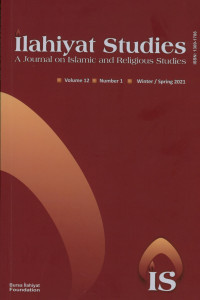Mariage et séparation à Damas au Moyen Age : Un corpus de 62 documents juridiques inédits entre 337/948 et 698/1299, by Jean-Michel Mouton, Dominique Sourdel & Janine Sourdel-Thomine
First paragraph: This volume makes available extraordinary documents on legal practices related to marriage for future research. While similar documents have been known, most of these originated from Egypt, pertained to the first three Islamic centuries and little is known about the historical context of their preservation. The importance of the documents in this volume thus goes back to three aspects: they refer to the Middle Period, they originated in Syria, specifically Damascus, and most importantly they form a coherent corpus. All documents are part of the Şâm Evrakları held in Istanbul in the Türk ve İslam Eserleri Müzesi. They were brought to Istanbul from Damascus in the late Ottoman period. In Damascus they had been part of the “Gheniza”-style storehouse for disused documents and books, the Qubbat al-khazna. The Şâm Evrakları have not been made accessible for research in the last decades, which is – to put it mildly – regrettable. They simply form the most important known collection of documents from Syria for the Middle Period and the fact that they are kept behind closed doors seriously impedes historical research. It can only be hoped that the Türk ve İslam Eserleri Müzesi changes its attitude and opens up this splendid collection.
Mariage et séparation à Damas au Moyen Age : Un corpus de 62 documents juridiques inédits entre 337/948 et 698/1299, by Jean-Michel Mouton, Dominique Sourdel & Janine Sourdel-Thomine
First paragraph: This volume makes available extraordinary documents on legal practices related to marriage for future research. While similar documents have been known, most of these originated from Egypt, pertained to the first three Islamic centuries and little is known about the historical context of their preservation. The importance of the documents in this volume thus goes back to three aspects: they refer to the Middle Period, they originated in Syria, specifically Damascus, and most importantly they form a coherent corpus. All documents are part of the Şâm Evrakları held in Istanbul in the Türk ve İslam Eserleri Müzesi. They were brought to Istanbul from Damascus in the late Ottoman period. In Damascus they had been part of the “Gheniza”-style storehouse for disused documents and books, the Qubbat al-khazna. The Şâm Evrakları have not been made accessible for research in the last decades, which is – to put it mildly – regrettable. They simply form the most important known collection of documents from Syria for the Middle Period and the fact that they are kept behind closed doors seriously impedes historical research. It can only be hoped that the Türk ve İslam Eserleri Müzesi changes its attitude and opens up this splendid collection.
- ISSN: 1309-1786
- Başlangıç: 2010
- Yayıncı: Bursa İlahiyat Vakfı
Sayıdaki Diğer Makaleler
Fifty Years in the East : The Memoirs of Wladimir Ivanow, edited with annotations by Farhad Daftary
Education and Learning in the Early Islamic World, edited by Claude Gilliot
The Proofs of Prophecy, by Abū Ḥātim al-Rāzī,
A Treatise on Predestination: Sharḥ Ḥadīth Iḥtijāj Ādam wa-Mūsā of Quṭb al-Dīn-zāda al-Iznīqī
Abdullah KARAHAN, Mehmet ŞAKAR
On Taqlīd : Ibn al Qayyim’s Critique of Authority in Islamic Law, by Abdul-Rahman Mustafa
